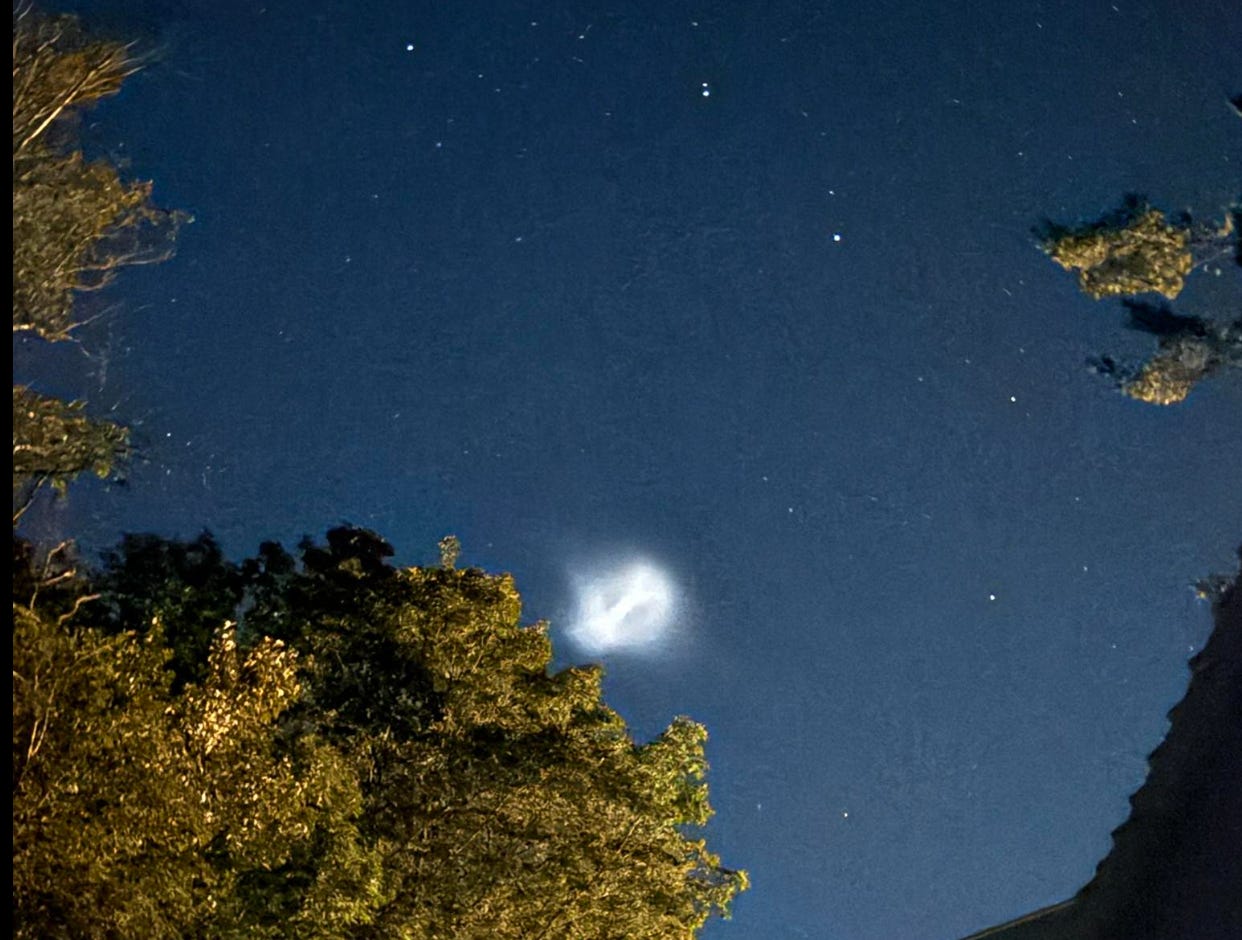We Found Out What That Big Thing in The Sky Was Last Night
Given the timing and novelty of the event, two primary explanations quickly gained traction online: a rocket launch and the Perseid meteor shower, which was expected to peak that same night.
We Found Out What That Big Thing in The Sky Was Last Night
A Vermont Mystery Lights Up Social Media
Last night, August 12, 2025, many Vermonters and residents across New England reported seeing a strange white glow or spiral in the night sky. Social media platforms buzzed with questions and theories as people tried to understand the unusual sight.
According to numerous eyewitness accounts shared on platforms like Reddit and reported by science news outlets such as EarthSky.org, the object appeared as a luminous and somewhat cloudy form, often with a brighter point in the center. Observers described it as moving slowly and sometimes exhibiting a rotating or swirling pattern.
Initial Guesses: Rocket Launches and Meteors
Given the timing and novelty of the event, two primary explanations quickly gained traction online: a rocket launch and the Perseid meteor shower, which was expected to peak that same night.
Some speculated that the phenomenon might be related to the launch of a United Launch Alliance (ULA) Vulcan rocket from Cape Canaveral Space Force Station in Florida. According to ULA and news reports covering the launch, this rocket carried a U.S. Space Force satellite and lifted off earlier in the evening.
Another potential explanation considered by the public was the Perseid meteor shower. This annual meteor shower is known for producing bright streaks of light as debris from Comet Swift-Tuttle enters Earth's atmosphere. Many who saw the unusual sky phenomenon reported that they were already outside hoping to view meteors.
The True Source: A European Rocket
However, investigations into the trajectories and timing of recent space activities have revealed the more likely source of the observed spectacle. According to EarthSky.org and further analysis of international launch schedules, the phenomenon was most likely caused by the upper stage of an Arianespace Ariane 6 rocket. This European rocket launched from Kourou, French Guiana, also on the evening of August 12.
The key difference, according to mission details, lies in the direction of the launches. The ULA Vulcan rocket from Florida followed an eastward trajectory to place its satellite in a geosynchronous orbit over the equator. This path would have taken it far to the south of New England and out of view for Vermont observers.
In contrast, the Arianespace Ariane 6 was launched on a northward trajectory to deliver a weather satellite, Metop-SGA1, into a polar orbit. This northward path took the rocket and its upper stage high over the Atlantic Ocean and within the line of sight of observers along the East Coast, including Vermont.
The Science Behind the Spiral
The unusual white glow and spiral shape, according to scientific explanations of similar events, are likely the result of the Ariane 6 upper stage venting leftover propellant after deploying its payload. In the near-vacuum of space at high altitudes (around 800 kilometers, according to mission information), this vented propellant rapidly expands and freezes into a cloud of ice crystals.
Because rocket upper stages often spin for stability, this venting process creates a distinct spiral pattern as the cloud of ice crystals is dispersed. This high-altitude cloud, still illuminated by the sun even after sunset on the ground, reflects sunlight back down to viewers, creating the luminous appearance. This type of event is known as a "twilight phenomenon."
Why Not the Meteor Shower?
While the Perseid meteor shower did peak on the night of August 12, the observed phenomenon had characteristics inconsistent with meteors. Meteors are typically brief streaks of light lasting only seconds. The observed spiral was a much larger, slower-moving, and persistent object visible for several minutes.
In conclusion, while initial speculation linked the mysterious sky event to an American rocket launch or a meteor shower, the evidence strongly suggests that Vermonters witnessed the visual effects of a European rocket's post-mission activity high in Earth's orbit. The timing, trajectory, and appearance all align with the behavior of a spent rocket upper stage venting propellant under the unique lighting conditions of twilight.



